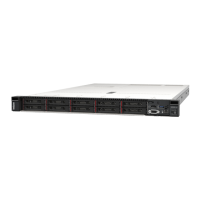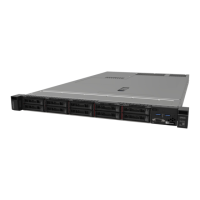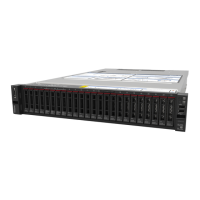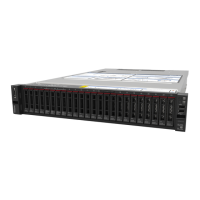CAUTION:
Sharp edges, corners, or joints nearby.
Attention:
• Read
“Installation Guidelines” on page 57 and “Safety inspection checklist” on page 58 to ensure that you
work safely.
• Power off the server and peripheral devices and disconnect the power cords and all external cables. See
“Power off the server” on page 75.
• Keep static-sensitive parts in their static-protective packages until installation to prevent exposure to
static electricity. Handle the parts with an electrostatic-discharge wrist strap or other grounding systems.
Place the parts on a static-protective surface.
• If the server is installed in a rack, slide the server out on its rack slide rails to gain access to the top cover,
or remove the server from the rack. See
“Remove the server from the rack (friction rails)” on page 82 or
“Remove the server from the rack (slide rails)” on page 89.
• Each processor socket must always contain a cover or a PHM. When removing or installing a PHM,
protect empty processor sockets with a cover.
• Do not touch the processor socket or processor contacts. Processor-socket contacts are very fragile and
easily damaged. Contaminants on the processor contacts, such as oil from your skin, can cause
connection failures.
• Do not allow the thermal grease on the processor or heat sink to come in contact with anything. Contact
with any surface can compromise the thermal grease, rendering it ineffective. Thermal grease can damage
components, such as the electrical connectors in the processor socket.
• Remove and install only one PHM at a time. If the processor board supports multiple processors, install
the PHMs starting with the first processor socket.
Note: The heat sink, processor, and processor carrier for your system might be different from those shown
in the illustrations.
The following illustration shows the components of the PHM.
220
ThinkSystem SR630 V4 User Guide

